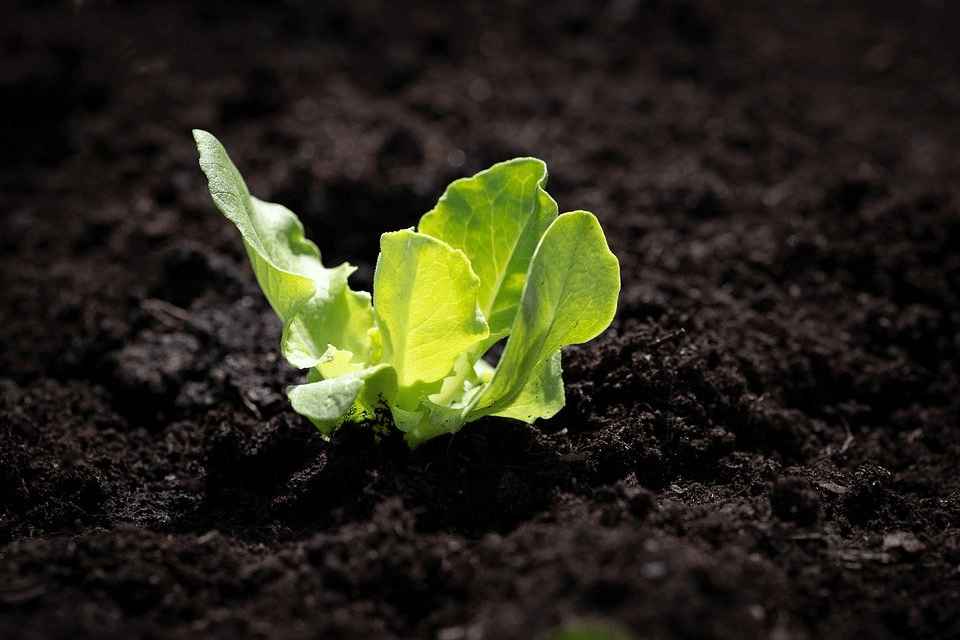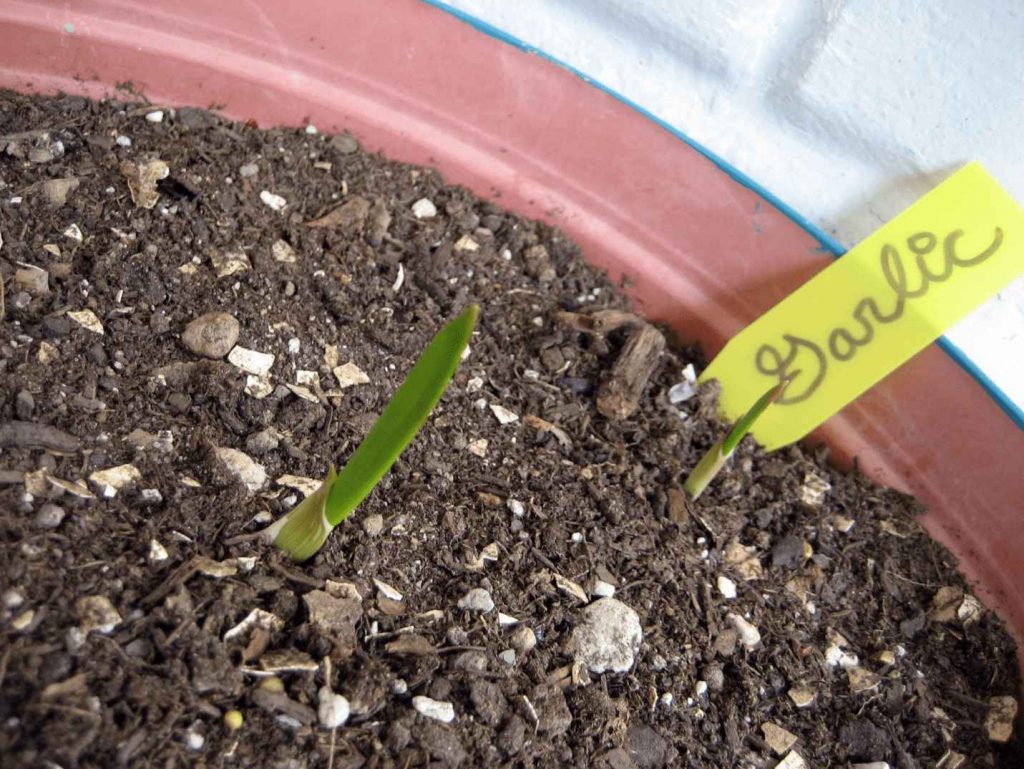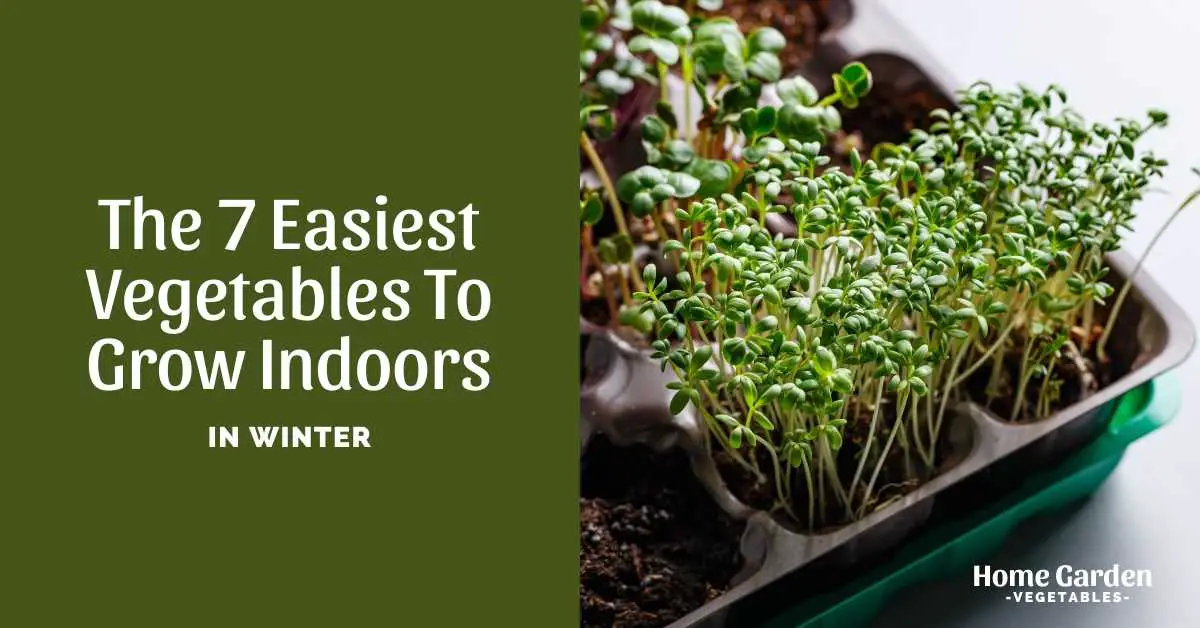Gardening isn’t a seasonal hobby. The onset of the cold season doesn’t mean you can’t have those garden-fresh supply of vegetables for the next couple of months. It merely means switching to indoor gardening so your vegetables can have a comfortable environment to thrive. It may not yield as much as your outdoor garden, but is fruitful nonetheless. Here’s a list of the 7 easiest vegetables to grow indoors in winter so you can enjoy fresh produce all year round.
The key is to find the vegetables that adapt well to indoor growing. If you have a sunny window, preferably a south-facing one, you’re in luck. Plenty of vegetables will thrive at this spot if you water and feed them well.
Reader Poll: What online courses would interest you?
Herbs

Start your indoor veggie garden with herbs since they’re the easiest to grow! Rosemary, thyme, cilantro, dill, mint, sage, lavender, basil, and oregano will all grow happily indoors. They don’t need much sunlight, with mint being the most shade-tolerant of the lot. However, a few hours of light each day will help them grow faster. Dill and basil as a bit sensitive to cold – you may want to keep them at a spot where the night temperatures don’t drop below 60 degrees.
Lettuce

All leafy greens are easy to grow indoors, but lettuce tops the list since it’s cold-hardy as well. It won’t have any trouble growing in a pot next to a sunny window, even when it’s freezing cold outdoors.
You can easily find lettuce seeds at gardening stores. Plant them in a pot with potting mix, and they’ll start within a week. These greens grow exceptionally fast; in just about a month, your lettuce crop will be big enough to harvest for the family.
Subscribe to our newsletter!
Carrots
Carrots are one of the easiest vegetables to grow in containers, particularly if you have hard, rocky soil out in the garden. Choose the smaller varieties, especially if you don’t have space for a large pot. For the shorter varieties, you’ll need a container that’s at least 8 inches deep, while the larger varieties will grow best in a 12-inch deep pot.
Plant the seeds ¼ inch deep in moistened potting mix and don’t let the soil dry out, or the seeds won’t germinate. Ideally, the seeds will germinate within two weeks. Once the seeds sprout, thin seedlings, so the carrots are at least an inch or two apart from their neighbors. Typically, they’ll be ready to harvest in about 2.5 months, but the exact growing period varies with the variety.
Kale

Just like lettuce, this nutritional powerhouse also grows really well in your indoor salad garden. It’s well-suited to indoor growing since it’s not too particular about its sunlight requirements, and will even tolerate partial shade. However, you’ll want to grow them next to a south-facing window, if you want denser, leafier growth.
Plant a bunch of seeds in a medium-sized container and cover them with ½ an inch of soil on top. Keep the soil consistently moist and thin the seedlings to one per pot since kale can grow quite big if treated well.
If you’re growing them for micro-greens, you can start harvesting them in just a few weeks. If, however, you want to harvest full-sized leaves, you’ll want to wait two months before harvesting.
Garlic Greens

Garlic greens are full of flavor and very easy to grow indoors. You don’t even need soil for growing these easy-going herbs. Just leave a few garlic cloves in an inch of water, and they’ll sprout within a week.
Alternatively, you can also plant cloves in soil. Preferably, choose a garlic bulb that has already sprouted (the usual store-bought garlic sprouts if left for a few days). Take out individual cloves and plant them in the potting soil, with the shoots facing upwards.
Once they are 10 inches long, they can be snipped to use as seasonings or garnish. These fresh greens will have that distinct garlic-y flavor that adds a twist to any dish it goes in.
Microgreens

Microgreens are among the easiest vegetables to grow indoors in winters. Since they take almost no space at all, they make the perfect plants for apartment dwellers. You can get them as a combination of seeds in a packet from gardening stores. The seeds are from various greens, including kale, beets, basil, Swiss chard, and radishes.
Since you’ll begin harvesting them as soon as the first couple of leaves appear, they won’t need a lot of growing space. Plant the seeds in a seedling tray or small pots and cover with soil only lightly.
Spray water to moisten the soil and wait for germination. They’ll sprout in a few days and are ready to harvest as soon as you see two sets of leaves. Cut them with a scissor at soil level, and they’ll regrow for more harvests.
Hot Peppers
Hot peppers are very sensitive to the cold, so don’t leave the plants outside if you plan on overwintering them. If you’re growing them in containers, you can simply move it indoors at the hint of the first frost. While they grow best outdoors in warm spring, giving plenty of hot peppers, they’ll thrive indoors too.
Make sure you choose a pot that’s at least 8 inches tall, so the roots have plenty of space to grow. Find the sunniest window for them as they’ll appreciate at least 10 hours of sunlight each day. Water them well but avoid overwatering. Allow the soil to dry out before you offer them a drink.
Pepper plants are self-pollinating. Nonetheless, a little extra help will go a long way in improving the harvest, particularly since wind and insects are limited in the indoor environment. Give the flowers a gentle tap to free the pollens so they can reach the female parts of the flower.
Grow Herbs And Lettuce All Year
There are options here to grow certain herbs and vegetables all year round. I have recently been having excellent results growing all year round using the Aerogarden Harvest indoor growing system.
Indoor Winter Gardening Tips
Growing vegetables indoors through the winters is an excellent way to ensure a steady supply of homegrown produce even when temperatures are freezing outside. However, you’ll need to follow a slightly different approach to ensure a successful garden indoors than the efforts you would have put into the conventional outdoor garden. Here are some tips to cultivate a successful indoor vegetable garden for the winters:
- Container Selection Is Imperative
While you don’t have to think about the container type of size when planting vegetables in a garden bed, they are a significant factor in indoor gardening. Make sure you pick a container that’s suitably sized for the vegetable you plan on growing in it.
Certain vegetables, such as tomatoes, have deep roots and will need a container that has a depth of at least 12 inches to grow optimally. Shallow-rooted vegetables, such as microgreens and most herbs, can grow in 2-inch deep pots.
Make sure that you keep in mind the recommended spacing for the vegetable variety and choose a container wide enough to accommodate the size of the crop you want. Alternatively, you can grow in multiple containers.
Check whether the container has drainage holes at the bottom. If there are no holes, you’ll need to drill them at the base before planting your vegetables. Proper drainage is important to prevent roots from drowning and rotting in wet soil.
- Good Quality Potting Soil
Don’t grow your potted vegetable garden in garden soil. It causes soil compaction and risks the possibility of pests and diseases in your indoor crop. Instead, choose a good quality potting mix to fill your containers. These typically include components like peat moss, vermiculite and perlite to keep the soil light, aerated and well-drained.
- Give Light
Light is often the limiting factor indoors, and especially so in winters when it’s not usually that bright outdoors either. Place the pots next to a south-facing window where they can get bright light for long periods during the cold season. If you don’t get enough light indoors, you may want to use artificial lighting to grow your crops. Most vegetables grow best in full sun. In the absence of full sun, the requirements can be well-catered with supplemental lighting.
- Keep Them Clear Of Drafts
Keep the containers away from drafty windows, as it can cause frost damage. Also keep them away from radiators and heaters since the dry environment created by these can cause the plants to dry out, obstructing their healthy growth.
- Choose Vegetables With Care
Not all vegetables are hardy to grow indoors, especially during winters. It comes down to the climate in your region and indoor environment. Choose from the vegetables listed in this post and give them the ideal growing conditions they ask for and you’ll be good.

